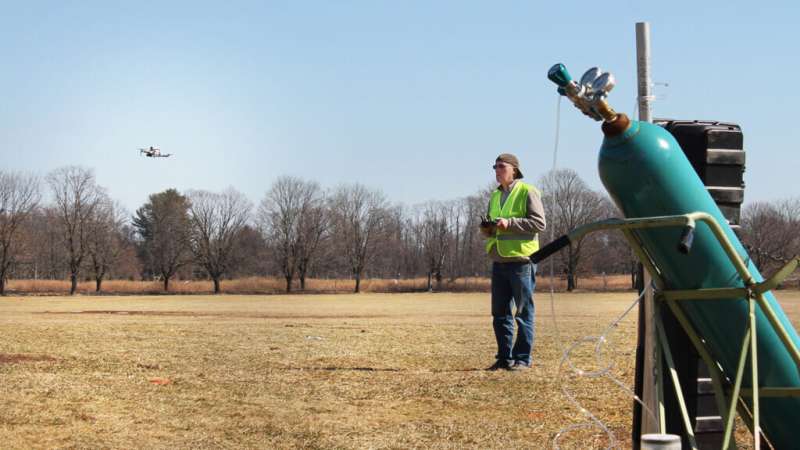Researchers at Princeton have created a laser-based sensing technique that identifies and measures greenhouse gas leaks, including small ones, pinpointing emission origins within one meter to facilitate quick fixes.

Gas drilling and sewer systems are increasingly being found to leak far more greenhouse gasses than previously believed. Leak detection methods currently in use are labor-intensive and require extensive measurement infrastructure or handheld infrared cameras that are insensitive to small leaks.
A team of researchers at Princeton University have developed a laser-based sensing method that can locate and quantify greenhouse gas leaks, both big and small, localizing emissions sources to within a meter for fast repairs. The new technology combines lasers and drones to remotely detect hidden leaks in inaccessible areas, unlocking the game-changing potential for atmospheric sensing.
The team’s approach involves a drone equipped with a retroreflector and gas-sensing equipment at a base station to track its flight. By bouncing a laser beam off the drone flying to specific points, the operator can locate and measure the intensity of a suspected leak. Drone-based atmospheric sensing techniques typically involve mounting gas sensors on drones. Still, this approach has limitations due to weight restrictions and the risk of flying an overloaded drone in hazardous environments. Multiple gas sensors on a drone are impractical due to size and safety concerns in hazardous environments.
The team of researchers put the gas sensing equipment on a mobile base station, allowing for a smaller drone outfitted with just a mirror to fly. This approach uses less expensive drones with longer flight times and can collect emissions data across large areas, enabling the monitoring of entire natural gas facilities in one flight. The method circumvents drone limitations and maximizes their potential, representing a paradigm shift in drone-based atmospheric sensing. The sensing method may enable measuring multiple gasses simultaneously, which is challenging with other drone-based approaches due to size and power limitations.
According to the researchers, adding lasers of different wavelengths to the base system could facilitate the measurement of other gasses alongside methane. They also view the team’s approach as a flexible technology platform that could inspire innovation and applications beyond methane leak detection.
Reference : Michael G. Soskind et al, Stationary and drone-assisted methane plume localization with dispersion spectroscopy, Remote Sensing of Environment (2023). DOI: 10.1016/j.rse.2023.113513






